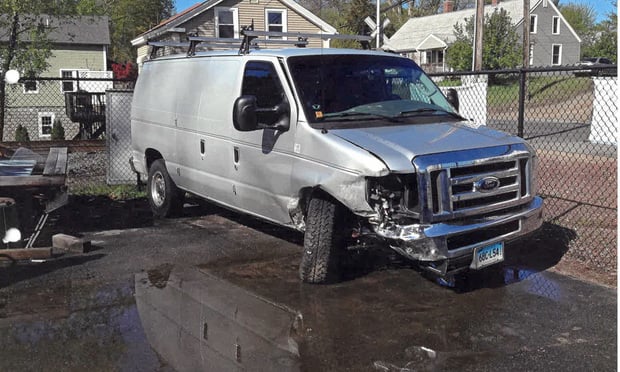E-Agencies Should Thrive As Web Use Grows
Noodle cites emerging opportunities as industry becomes more Net-friendly
At the beginning of 2000, there were more than a dozen “e-agencies” focusing on the small commercial space, providing agents and brokers with online SEMCI data entry, access to multiple carriers, and other Web-based services. Today only a few such agencies remain viable.
Looking ahead, what will be the role of those surviving e-agencies and what new insurance-on-the-Web offerings can they be expected to roll out, both short- and long-term?
To predict the future of insurance-on-the-Web, its essential to first examine three key reasons so many fledgling online agencies failed while others survived.
First and foremost, to provide agents and brokers with valid, dependable online products and services, an e-agent must be a licensed distributor of carrier products.
But before even reaching that point, an e-agency must have developed strong relationships with a sufficient breadth of stable, nationally branded carriers who subscribe to and support the e-agent strategy and who have constructively dealt with any perceived channel conflicts. The e-agencies still operating today worked diligently to assuage any fears carriers had about working with them, endeavored to understand carriers' appetite and underwriting criteria, and focused on bringing carriers profitable business.
Second, building a comprehensive “agency-facing” Web-based system is essential for success.
Too many fledgling e-agencies attempted to dislodge the agent in the agent-customer relationship. E-agencies that survived strengthened that bond and provided toolsets to make agents and brokers more successful.
Third, in addition to having the significant capital required to continually upgrade technology functionality and infrastructure, e-agencies must have anticipated and planned for other factors, such as a slow-building revenue source created by commission splits, gradual acceptance of the e-agency into an agency's operation, and the variability of an agency workforce's technological advancement. Recognizing the nuances of the income-expenditure model, the e-agencies that have survived did not attempt to build their systems with complete functionality at launch; they built them gradually to meet demand.
Having met these survival criteria, how are the remaining e-agencies changing to remain viable, and what kinds of new value-added services can be expected from them?
In a world where carriers have minimum premium requirements for agencies to be a member of their distribution network, and as long as agencies see the value of getting quotes from multiple name-branded carriers, there will be a need for e-agencies. As more agents become comfortable with and value Web-based technologies and the consistently faster turnaround service, they will be more willing to use these services to grow their books of business by accessing markets they don't already have.
E-agencies are also valuable to carriers as a means to expand their distribution network without expending additional field-level resources and marketing dollars. By contracting with e-agencies, carriers can reach thousands of additional agencies in areas where they are looking to quickly increase market penetration.
Over the next few years, there will be a greater emphasis on enhancing the online options available to agents for meeting and expanding their capacity to service their small-business customers.
Some examples of enhanced service options currently available to agents from major carriers include online delivery and viewing of policy documents, service requests, access to billing information, and payment history. These options are also being extended to loss runs, claim information, audits and other post-sales documentation. As these capabilities become more prevalent, e-agencies will provide similar online services to agents and brokers as a “single source” of client documentation across all carriers.
Within the next two years, the majority of national carriers will have improved their Web-based small commercial and personal lines systems, and regional carriers will have made significant inroads into making all their offerings Web-based. Mirroring that trend, e-agencies are developing capabilities to provide a unified cross-product platform that enables rating, issuing and servicing of all lines of business commercial and personal.
Real-time services will be more firmly established in the existing and emerging Web-based carrier systems, particularly as they relate to verifying submissions and application data by MVRs, credit checks, reverse phone lookups, Dunn & Bradstreet reports and ISO ratings. By incorporating these services into the natural flow of business, agents will receive more accurate, timely proposals with less post-issue underwriting.
As carriers become more comfortable with the operational efficiencies and underwriting risks these systems deliver, these small commercial platforms will likely become the home to larger risks typically seen as beyond small commercial-sized accounts.
Also within the next two years, online wholesalers and program managers will become established in the marketplace, providing access to and service of business on a national scale with branded carriers and specialty product providers. Specialty brokers offering online quoting, issuance and service capabilities will be available to independent agents.
The benefits for both independent agents and larger brokers will be significant: They will no longer have to cobble together a patchwork of MGAs to meet clients' needs, nor will they have to learn and keep track of multiple submission systems.
With the advent of PDAs and Wi-Fi-based devices, within the next couple of years agents will be able to enter all carrier-required, business-specific application data directly into a Wi-Fi-based e-agency single-entry, multiple-company interface system in real-time, ascertain markets, get quotes, bind coverage and service accounts, all while at the client location. This capability will put them at a distinct advantage in the highly competitive market.
As e-agencies have already proven, their technologies are expandable, robust and capable of handling thousands of daily transactions. As national and large regional brokers wrestle with how to best handle their small commercial business, application of the e-agency model and technologies will quickly bring efficiencies and a consistency in process execution.
Professional liability is another untapped area that offers a myriad of potential Web-based applications. In the near future, carriers will likely move to a model where they take all professional, directors and officers, and employment practice liability application data via the Web, then quote and issue from that data, requiring that only a “slimmed down” warranty statement be signed.
A number of program managers are already rapidly moving ahead in this field and taking a “BOP-like” (standard businessowners policy) approach to the signature requirement all application data is captured online, along with an electronic signature or agreement that verifies the accuracy of the application data, and rating and issuance is executed based on that data and agreement alone. No other signatures are required.
After nearly half a decade of expansion, shakeouts, and technology advancements and enhancements, e-agencies are established, accepted players. They are now poised, and must be expected, to take insurance-on-the-Web and the benefits it affords agents and brokers to the next level.
As they develop greater capabilities across the entire lifecycle of the insurance transaction from quoting to servicing to renewal and as they develop new ways to deliver product and develop new national programs, they will become an even more essential and integral part of any agency's or brokerage's small commercial operations.
Kathryn Emmerson is CEO of Chicago-based InsuranceNoodle, a national online network of insurance agencies serving the small-commercial market.
Reproduced from National Underwriter Edition, June 18, 2004. Copyright 2004 by The National Underwriter Company in the serial publication. All rights reserved.Copyright in this article as an independent work may be held by the author.
Want to continue reading?
Become a Free PropertyCasualty360 Digital Reader
Your access to unlimited PropertyCasualty360 content isn’t changing.
Once you are an ALM digital member, you’ll receive:
- Breaking insurance news and analysis, on-site and via our newsletters and custom alerts
- Weekly Insurance Speak podcast featuring exclusive interviews with industry leaders
- Educational webcasts, white papers, and ebooks from industry thought leaders
- Critical converage of the employee benefits and financial advisory markets on our other ALM sites, BenefitsPRO and ThinkAdvisor
Already have an account? Sign In Now
© 2024 ALM Global, LLC, All Rights Reserved. Request academic re-use from www.copyright.com. All other uses, submit a request to [email protected]. For more information visit Asset & Logo Licensing.








